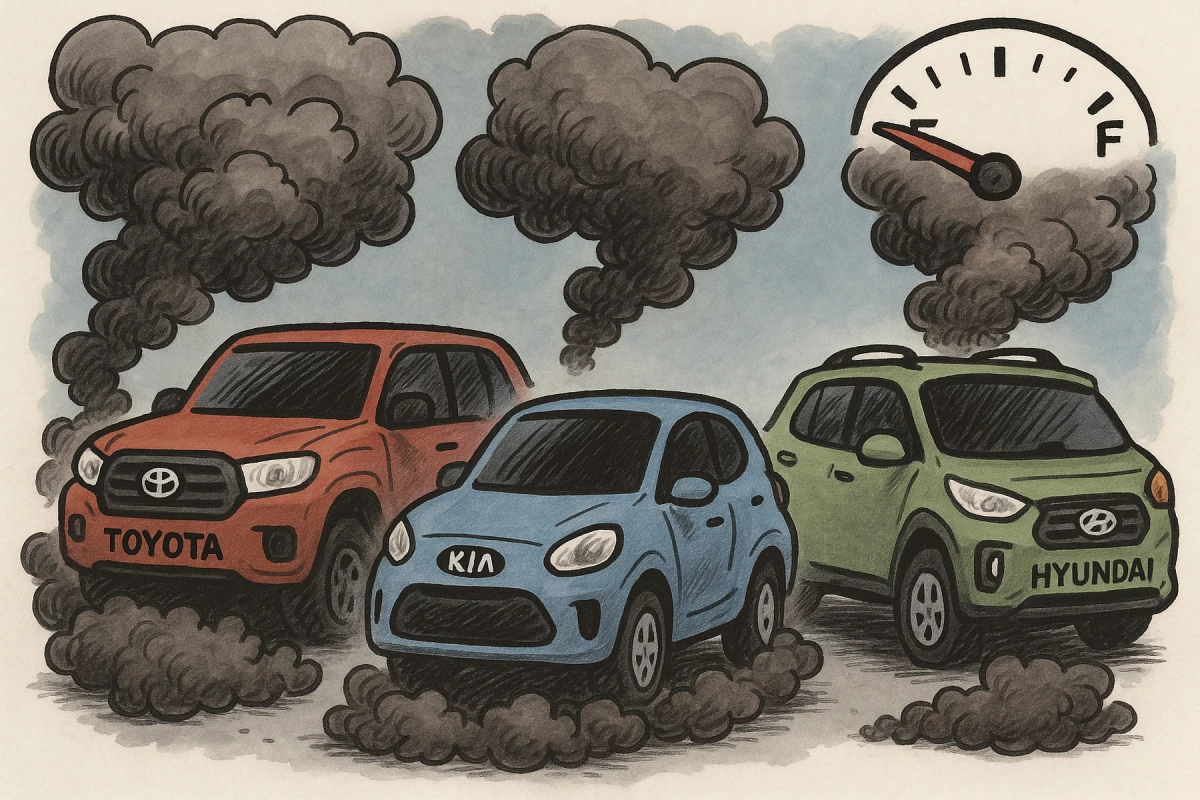The Australian Automobile Association (AAA) just dropped a bomb on some of the world's top-selling car manufacturers: Many vehicles from big-name companies are using far more fuel than advertised – as much as 33% more.
Remember when news broke in 2015 that Volkswagen had rigged over 11 million diesel cars with secret software to cheat on emissions tests? In the real world, these cars were spitting out over 40 times the legal limit of nitrogen oxides (NOx) yet still "passed" emissions tests. That's thanks to sneaky VW code that detected when the car was in a lab and switched into a special "low-emissions mode" just for the test. That cost VW US$30 billion in fines alone, not to mention a serious ding to the company's otherwise pretty good reputation.
Since 2023, AAA's Real‑World Testing Program, funded by AU $14 million (US$9 million) of federal money, has done tests on 114 popular cars, trucks and vans. 88 of those popular cars (77%) had a higher fuel consumption than the figures advertised on the sticker, which the carmakers arrived at in their own mandated lab tests.
And of the last 30 vehicles AAA tested, 11 of them burned 10% or more fuel than the manufacturer was claiming to Australian buyers. Ouch.
The biggest offender of the bunch is the Hyundai Kona Hybrid. Hyundai claims an extremely wallet-and-ozone-friendly 60.3 mpg (3.9 L/100km), but in actuality only got 45.2 mpg (5.2 L/100km). That's 33% more fuel than what Hyundai claims on the hybrid electric vehicle.
Another Korean car manufacturer, Kia, took second place (or would that be second to last place?) with its Stonic – a relatively well-received and likeable – albeit funny named – small SUV/crossover/hatchback thing. Claimed? 43.6 mpg (5.4 L/100km). Reality? 34.6 mpg (6.8 L/100km). That's a 26% difference in fuel consumption margin. Nearly 10 miles per gallon. Can you imagine what having a 26% margin of error would be for a transatlantic flight? Slightly more than a one in four chance of swimming with the fishes.
Toyota rounded fourth-in-bad (after another Hyundai) with its Fortuner. What the 4Runner is to the Tacoma, the Fortuner is to the Hilux. Toyota claimed 31 mpg (7.6 L/100km) with an actual figure of 26.7 mpg (8.8 L/100km), making it 16% worse than Toyota's brochure claims.
I live in a US state with the highest speed limits in the entire country at 85 mph (137 km/h). My fuel economy drops pretty significantly above about 70 mph (113 km/h) ... being somewhat of an eco-conscious, conservationist-ish, and not-exactly-affluent type, I'm happy to sit in the slow lane at 15 mph (24 km/h) under the posted limit. Finding out that my 60+ mpg (3.8+ L/100km) vehicle is actually only getting two-thirds of that would upset me greatly.
- 3rd: Hyundai i30 Hybrid
- Claimed: 60.3 mpg (3.9 L/100km)
- Actual: 51.1 mpg (4.6 L/100km) – +17% more fuel than advertised
- 5th: Kia Sportage Hybrid
- Claimed: 42 mpg (5.6 L/100km)
- Actual: 36.8 mpg (6.4 L/100km) – +14% more fuel than advertised
And those fuel numbers don't take into consideration the failed emissions tests. The Ford Ranger failed all three emissions categories: Nitrogen Oxides (NOx), Total hydrocarbons (THC), and Particulate Number (PN). Toyota didn't fare well either, with both the HiAce SLBW and the Fortuner failing THC and NOx, respectively. The latter testing at more than six times the Aussie legal limit of 96 mg/mi (60 mg/km).

That being said, there were a few excellent performers that got better fuel economy than advertised in the Australian Automobile Association tests. Most notable was the ~$20,000 Mazda CX-30 G20 Pure crossover that got a respectable 40.5 mpg (5.8 L/100km) over the claimed 37.3 mpg (6.3 L/100km); 8% better.
- 2nd: Lexus NX350h
- Claimed: 47.0 mpg (5.0 L/100km)
- Actual: 50.0 mpg (4.7 L/100km) – 6% better
- 3rd: Mercedes-Benz GLC300
- Claimed: 30.5 mpg (7.7 L/100km)
- Actual: 32.2 mpg (7.3 L/100km) – 5% better
And in terms of eco-friendliness, it should be no surprise that the Lexus NX350h billed quite well, sitting at the top of the cleanliness board. So clean, in fact, one could sarcastically joke that it's doing a great job of filtering the air as you drive it. The fuel-friendly Mazda CX-30 took second spot, while oddly enough, the fuel-thirsty-and-lies-about-it Hyundai Kona Hybrid was the third cleanest running vehicle in the test.
To ensure accuracy and repeatability for all the tests, the AAA conducted 20 control tests using a Toyota RAV4. The results showed less than 2.5% variance, confirming the testing process wasn't influenced by driving style or other external/human factors.
While the AAA numbers may look shocking, they do not mean car buyers in every country are getting fleeced. In the US, the EPA’s 5‑cycle label errs by only about ±5 % on average, thanks to tougher test cycles and built‑in corrections. Europe’s newer WLTP (Worldwide Harmonized Light Vehicles Test Procedure) labels are better than the old NEDC (New European Driving Cycle), yet independent data still show a real-world vs WLTP gap of 14 % – and plug‑in hybrids can be three to five times thirstier than their brochures.
Australia, still tied to an outdated lab cycle, unsurprisingly sees the largest gaps. The New Vehicle Efficiency Standard (NVES), which aims to reduce carbon emissions from new vehicles by encouraging manufacturers to supply more fuel-efficient models and takes effect on January 1, 2026, is intended to more closely align Australia with global vehicle markets.
What are your real-world experiences with your vehicle? Do you try to stretch out a gallon of fuel, or do you just "pay the piper" and suck it up?




